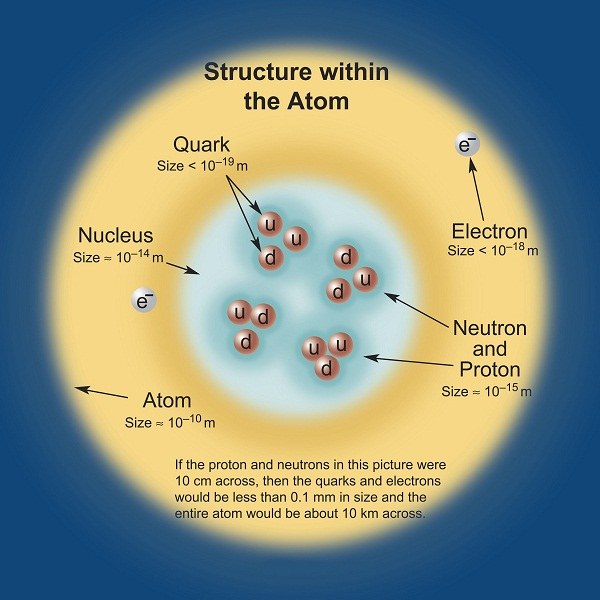The theory of quarks
The theory of quarks was developed in order to describe the interaction of particles. It is important to note that at a free quark in nature doesn't come across as quark, strictly speaking, is not itself a particle. This way the configuration of the electromagnetic wave in the particle and the particle typically includes not one such wave. The quark charge equal to one third the charge of an electron, and its scale is 0.5*10^-19 (10 to the negative nineteenth power), is smaller than the size of a proton is about 20 thousand times. Hadrons (which include protons and neutrons) also are composed of quarks.
At present, distinguish six types of quarks, usually they say "flavors". In addition, quark also has another characteristic, important to distinguish the type is the color. Obviously, this abstract division, the real quark, of course, has no color, flavor. But for calibration of quarks, this theory is very convenient. Each type of quark meets antiquark – that is, "particle", the quantum number which opposite. Quantum numbers are used to describe the properties of quark.
The story of how quarks got their name, quite funny. Gell-Mann, the scientist who first suggested that hadrons are composed of special particles, borrowed this word from the James Joyce novel "Finnegans Wake", which contains the words: "Three quarks for Mr. Mark!".
The theory of quarks in physics can be called one of the most poetic. Here and history of the name, and the characteristics of color and flavor, and the types of quarks: a true, lovely, charmed, strange... Each type of quark is characterized by charge and mass.
The role of quarks in physics
On the basis of the quarks happen strong, weak and electromagnetic interactions. At strong interactions can change the color of a quark but not the flavor. Weak interactions change flavor, but not color.
At strong interaction, a single quark cannot be removed from the rest of quarks for any appreciable distance, that's why in a free form them impossible to observe. This phenomenon is called confinement. But hadrons – "colorless" combinations of quarks – can scatter from each other.
Whether real quarks?
As due to confinement to see individual quarks is impossible, it is often the non-experts ask: "if all quarks, if we are unable to observe them? If it is not a mathematical abstraction?"
The reasons for the reality of the theory of quarks a few:
All hadrons, despite their numbers, have a very small number of degrees of freedom. Initially, the theory of quarks described by these free parameters.
- Quark model appeared earlier than were known a hadron particles, but it was perfectly integrated.
- Quark model suggested some of the consequences, which were then confirmed experimentally. For example, in hadron colliders became possible to "knock out" the quarks of the protons in high-energy collisions and the results of these processes have been observed in the jets. If the proton were indivisible particle, no jets would not be able to exist.
Of course, despite the experimental confirmation, the model of quarks physicists still leaves a lot of questions.





